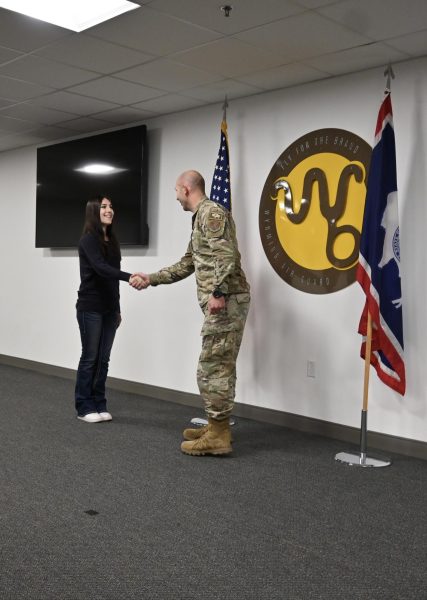How severe food allergies affect a students life
Remember the “peanut free” table in elementary school? You may not have realized it, but food allergies of all severities are still just as prevalent today, although we may not hear of them as much. Often times, student with allergies’ lives are affected in every way. A pizza party can seem life-threatening, an ice cream social, embarrassing. Even the lunch table with friends can bring up an uneasy feeling.
Many people in my family have severe food allergies. Avoiding something that could cause a reaction is more than picking the food that suits you on a menu–so much thought goes into cross-contamination, whether there might be something not listed on the menu, and the constant fear of a reaction. These reactions are often considered embarrassing by those who suffer from food allergies. Opening up to someone about it can take trust. But why? I set out to answer this question with the help of those around me.
That is why I was so grateful that a student with multiple food allergies agreed to tell me about her experience; she wishes to remain anonymous. She stated, “It does affect how I eat, at restaurants, or at parties.” The fight for awareness and safety can seem hopeless, as the number of food allergies diagnosed increases daily, yet the way they are perceived has not changed. “It’s not something that can be avoided,” she added, and this student was absolutely right.
This interview lead me to the school health office, where Joan Suder answered some important questions for me. It is very rare that the health office sees a serious allergic reaction, called anaphylaxis. Many students self-carry the medication that could save their life in an emergency. Suder also explained that, “All of our staff members are trained with the Epi-Pen, so that we can act fast enough for it” The time frame is short from when a student feels a reaction to needing serious medical care. Although that can seem unsettling, the health office carries the medication and all the staff are trained.
One strong soul, freshman Emma Lambert, agreed to talk with me about her allergies. Lambert has been diagnosed with a severe nut allergy. She responded to my questions openly, her motivation to raise awareness for all allergies. She said, “In elementary school I had to sit in the peanut-free table, and I was a little bit excluded from a lot of people in my class, ‘cause I had to sit over there or else I would like, die.” This exclusion has stuck with her despite the many other positive lunchtime memories that could have covered it over. I asked Emma about how her allergies have affected her social life, and how people respond to her allergies. Emma told me, “Eating at peoples houses, I just have to make sure that everything is nut free,” she said.
“People actually respond really well, they are usually really concerned about it. I still feel like it could be brought to more attention.” What students have to deal with is difficult and complex. There are so many emotional and physical factors that determines their allergic response. There is a wide range of severity and an equally expansive one of people’s response to allergies. No matter what your connection to food allergies is, Lambert has some words of wisdom. She says, “Don’t eat anything with nuts in it. You can do it, and get friends that are supportive of you. I love you.”
My goal while writing this article was to raise awareness about the food allergies that separate teens. But, as I kept investigating and learning, I realized that there are a wide range of physical and emotional obstacles when it comes to allergies. Although this spectrum varies, everyone with an allergy must change their life to adapt. Also, there is a varied scale of how others react to someone’s allergy. In the end, everyone deals with something. All people and problems are different and cannot be compared to each other, but all have pushed through and persevered.
Your donation will support the student journalists of Fossil Ridge High School. Your contribution will allow us to purchase equipment and cover our annual website hosting costs.

Caroline Sears is thrilled to be Editor in Chief along with Melissa May this year. The pair hopes to improve the paper in every way, but they are focusing on ensuring the stories are meaningful and that the paper’s staff is connected.
She is passionate about theatre and her favorite subject is English....

Despite all the warnings given to her, senior Isabella Mahal filled her schedule with AP classes and a single TA period. Many of these classes were only open to seniors and fascinate her, such as AP Literature and AP World History, so not having an off period doesn’t bother her. It isn’t just her...













